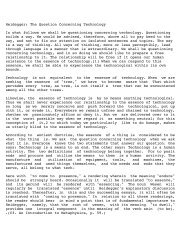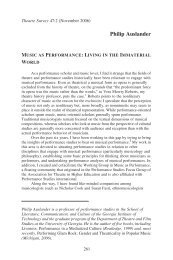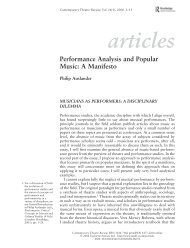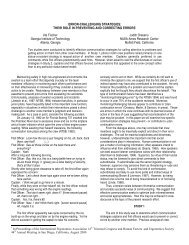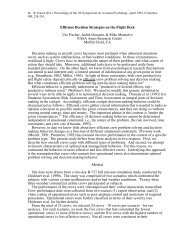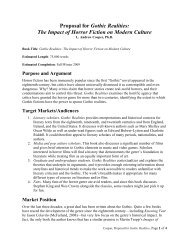INTERACTION DESIGN PRINCIPLES FOR INTERACTIVE ...
INTERACTION DESIGN PRINCIPLES FOR INTERACTIVE ...
INTERACTION DESIGN PRINCIPLES FOR INTERACTIVE ...
Create successful ePaper yourself
Turn your PDF publications into a flip-book with our unique Google optimized e-Paper software.
MSN TV 2, which Microsoft rolled out in late 2004, features high-speed Internet<br />
connections and home networking and messaging capabilities in addition to functioning<br />
as a basic TV-based Web and email terminal. Matthew Fordahl, an Associated Press<br />
technology writer, notes that the onscreen display is well designed. The general interface,<br />
as well as the email and instant messaging components, are all user-friendly and easy to<br />
use from a distance. However, the Web browsing aspect of MSN TV 2 is still a hit-or-<br />
miss experience. Awkward scrolling, as noted by Nielsen in 1997, remains an issue to<br />
this day, as is difficulty in navigating through the application using the remote (Fordahl<br />
notes that a touchpad, trackball, or other mouse-like device would have made it easier).<br />
Finally, due to the relatively poor resolution on NTSC screens, video quality on external<br />
Web sites and within the MSN TV 2 service was acceptable only when the clips didn’t<br />
show a lot of action (Fordahl, 2004).<br />
4.5.2 Microsoft Media Center<br />
The Microsoft Media Center system is meant to serve consumers as a cataloging<br />
and access system for all home media, including television, home videos, pictures, and<br />
music. The newest version, MCE 2005, has full DVR capabilities; the system allows<br />
users to watch and record TV on a personal PC as well as to share digital media files such<br />
as photographs, music, and video with the other screens and TVs in the household.<br />
According to Windows eHome Division General Manager Joe Belfiore, while almost<br />
50% of all Media Center buyers are using the machines in their dens, studies, or home<br />
offices, 27% are using the machines in their living rooms, and 23% are using them in<br />
bedrooms (Thurrott, 2004). These numbers are striking and truly speak to consumers’<br />
growing acceptance of converging entertainment technologies. Figure 4.10 provides<br />
examples of iTV functionalities on the MCE 2005.<br />
104



